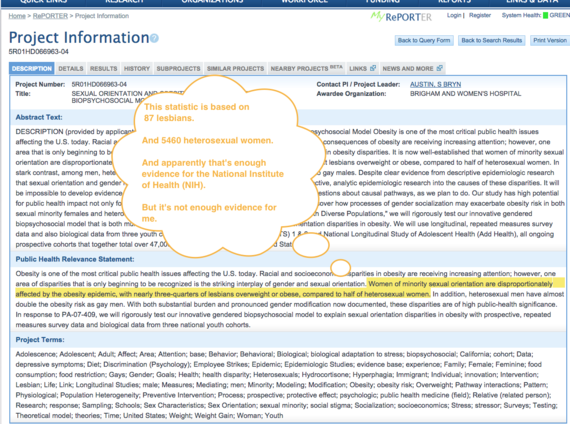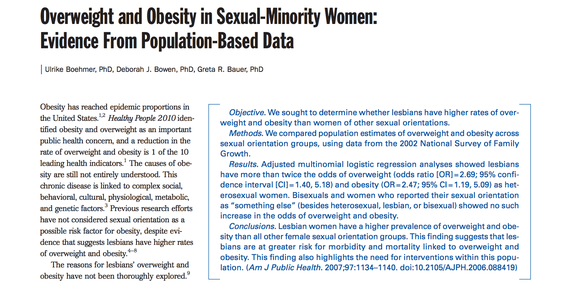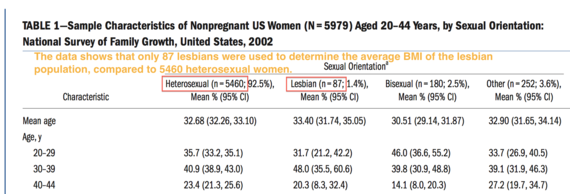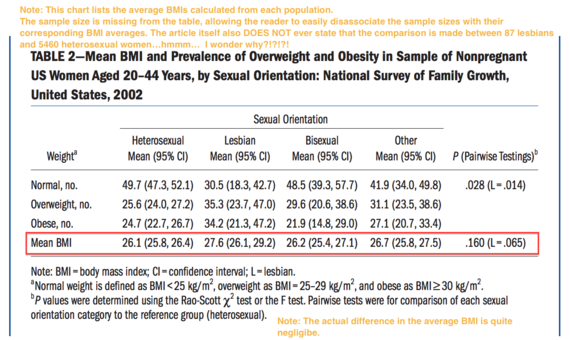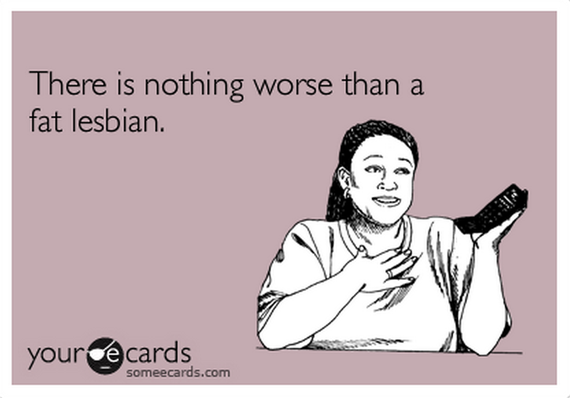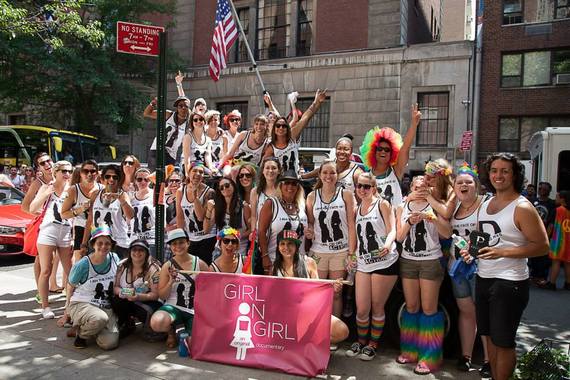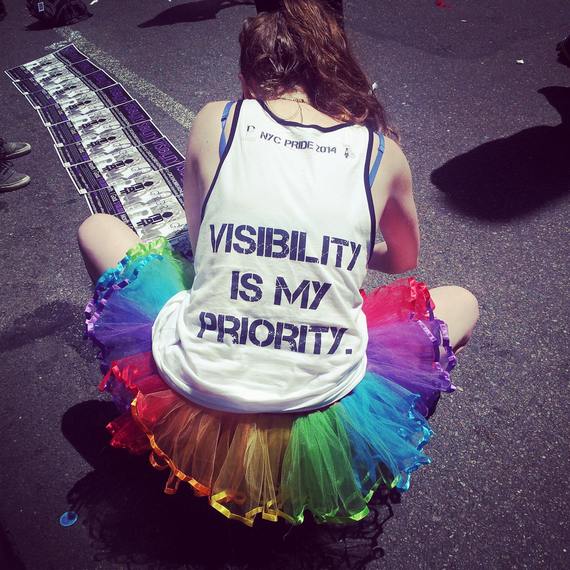Lgbt in The Media!
I didn’t mean prissy in a bad way just so you all know….
Daily Archives: September 15, 2014
I'm From Driftwood Presents: 'You're Bisexual? Then Why Not Choose To Be Normal?'
I'm From Driftwood Presents: 'You're Bisexual? Then Why Not Choose To Be Normal?'
A video from the LGBT story archive I’m From Driftwood asks, ‘what’s normal anyway?’
Eliel Cruz
Facebook Forcing Drag Queens Out of the Closet
Facebook Forcing Drag Queens Out of the Closet
Drag queen Sister Roma had been using Facebook for over six years when she was blocked from her account this week until she agreed to change her settings to reflect her legal name, Michael Williams. In a reported effort to enforce safety rules that insist that all users indicate their legal name, Facebook may have put Roma, and potentially thousands of other drag performers, at risk while inadvertently igniting a firestorm that is sweeping across the LGBT community.
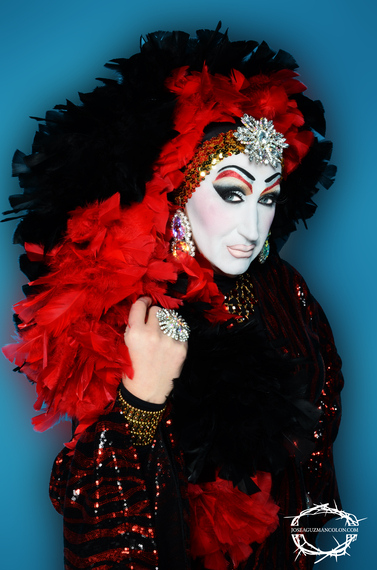
Photo by Jose A. Guzman Colon
Many performers use fictitious names to develop their identity and brand. Facebook provides these personalities a platform to communicate and share their latest happenings and news. When asked about the matter in an interview, a representative from Facebook indicated that the use of a fan page was one viable manner in which individuals could use their stage name on the platform, but that safety dictated that all people pages be linked to legal names. However, for drag queens, the distinction between the characters we play and the people we are in our daily life can be fluid.
Such is the case for the feisty Sister Roma, a member of the Sisters of Perpetual Indulgence, a nonprofit organization that is known to advocate for and support the LGBT community. While Roma may be Michael by birth, she has developed longstanding friendships through the years that go beyond simply posting events on her Facebook wall. Stripping Roma of her stage name in effect ripped her painted face right off and exposed Michael’s privacy while it devalued Roma’s relationships. Roma’s response to this move was to go on the offensive, whipping up a Twitter hashtag war cry, #MyNameIsRoma, and letting out an impassioned battle call in an interview, declaring, “I detest the idea of having a fan page. I’m not fucking Britney Spears. I have friends, not fans.” Her calls did not go unanswered: Drag queens and members of the LGBT community around the world have begun rallying behind Roma and her sisters, spreading the news of Facebook’s move against drag artists, including through achange.org petition urging the company to do away with the hurtful policy.
The claim that forcing drag queens to broadcast their true identities to the entire world is somehow a safety measure falls on deaf ears in a community that is made up of individuals from all walks of life who have endured attacks for their mere existence for as long as they can remember. Gays, lesbians, bisexuals, and transgender people — and drag queens can often belong to more than one of these groups — know full well the difficulty that comes with coming out to the people with whom they are closest. For that reason many drag queens, while leading fulfilling lives both on- and offstage, have not let family members or employers in on the news of their alternate personae, as it’s a deeply personal and hard conversation to have — sometimes more difficult than coming out the first time. Coming out as a drag queen has led to more than a few broken families, lost employment, and strained friendships. This is why, while cultivating relationships with individuals online using their stage name, not all queens are fully comfortable with letting certain family and friends into their world of drag. Facebook’s policy forces these queens to either choose between maintaining a social-media presence and risking losing their online support system and carefully balanced identities.
Only months ago Facebook was applauded for planning to provide non-binary gender options to users. In addition, profiles are awash with fictitious names and identities, which is why many are questioning the motive behind what seems like a targeted and specific attack on drag queens by Facebook. There is some whispering that the move has nothing to do with safety but is merely a means of making more cash, as fan pages are places where personalities can pay great money to advertise and sponsor their posts. Whatever the reason, the practice is coming across as a bigoted attack on a group of passionate users who have made Facebook their social home for years. It smacks of bullying and feels like yet another form of harassment toward the LGBT community.
Zachary Quinto defends Michael co-star James Franco's obsession with gay topics
Zachary Quinto defends Michael co-star James Franco's obsession with gay topics
‘He’s someone who is really interested in generating a dialogue’
gregh
Hayara Steponavicius na 9 Parada lgbt de Guarulhos
Hayara Steponavicius na 9 Parada lgbt de Guarulhos
Dustin Lance Black's Newest Play Shows Us LGBT Life in Russia
Dustin Lance Black's Newest Play Shows Us LGBT Life in Russia
We mustn’t ‘forget about our brothers and sisters abroad,’ says Black.
Trudy Ring
The Problem With the '75 Percent of Lesbians Are Fat' Statistic
The Problem With the '75 Percent of Lesbians Are Fat' Statistic
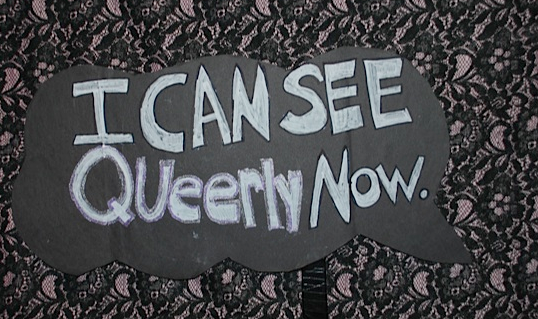
It is 8:15 a.m. on a Saturday morning, and I just spent no less than six hours completely consumed by statistical farce. My head is pounding, my eyes are burning, the air-conditioning seems unconscionably loud, and all I want to do is eat some cereal and go to bed. But alas, I am writing. I know if I stop now, I’ll never be able to maneuver my way back through this vortex of numbers, articles, side notes and screenshots to logically prove to you how painfully misleading and downright stigmatizing this “75 percent of lesbians are overweight or obese” media frenzy is.
My bookmark folder on “lesbian obesity and stigmatization” was born in March 2013, when the study purporting to examine the “interplay of gender and sexual orientation in obesity disparities,” funded by The National Institutes of Health’s (NIH) Eunice Kennedy Shriver National Institute of Child Health and Human Development (NICHD), only had a million and a half dollars to its name.
Buried in the abstract of the study appears the line, “three-quarters of lesbians are obese,” a statistic employed by the lead researcher as evidence to support funding, and subsequently exploited by the news media to critique ludicrous government spending. Several articles surfaced highlighting the latter, first trickling in on my keyword “lesbian” Google News alert, and then flitting about my newsfeed outfitted with the same semantic bait: “The Government Spends Millions on ‘Lesbians Are Fat’ Study.” One second-rate article after another framed the NIH grant as a “disturbing waste of tax dollars,” that ignored the “well-being of the nation as a whole,” because let’s face it, who really cares about lesbians? Especially fat lesbians. It was insufferable.
The first time around, the lesbian blogosphere did not seem to pay the story much heed. I was inundated with work, so rather than rise to the occasion, I decided to do some research, and file my rebuttal into the “stories to write later” folder. Then last week, like déjà vu, the headline resurfaced with a vengeance. They say, “pick your battles,” and this time, I was ready with plenty ammo. I watched my newsfeed and waited. I wanted to see if anybody else would pick up on what I had found…
Here was Autostraddle saying that the statistic “missed the point” entirely, and extolling queer culture for being more open to loving ladies of “all shapes and sizes.” At XOJane, the author cleverly quipped about quinoa to make the jarring insult seem a little less derisive; “Sure, 75% of lesbians may be overweight or obese, but in my anecdotal experience at least 90% are also vegans, so how are those broads getting so fat on quinoa and nutritional yeast?”
I recognize these writers for their effort to rationalize a highly irrational and condemnatory statistic, and applaud their desire to further extend the message that lesbian culture is more body positive than most other subcultural communities. I do agree with that claim.
But in every post, the same questions remained unasked:
- WHAT IF 75 PERCENT OF LESBIANS ARE NOT OVERWEIGHT OR OBESE?
- What if the researchers are wrong?
- What if the widely quoted statistic that “three-quarters of lesbians are overweight or obese” is based on unsubstantiated data and extremely small sample sizes?
- What if the claim is a statistically insignificant pile of garbage that is wholly misleading?
For some odd reason, nobody ever questioned the validity of the statistic itself, when it was established as fact, or what the motivation behind the original research was in the first place. I, on the other hand, was determined to find the proof in the pudding!
My journey through the depths of Google Scholar finally led me to the same article again and again that claimed, “lesbians are more than twice as likely to be overweight or obese than heterosexual women.” This one article is cited in nearly every other major academic article on the subject of sexual minorities and BMI (body-mass index).
Here’s the kicker: Within the study, there is one specific chart that notes the sample size of lesbians used to calculate the average BMI, used to determine overweight and obesity of the group. I should have selfied my face in the moment because it would’ve made for a perfectly histrionic Tinder pic — seriously, nothing says, “Are you F*CKING KIDDING ME?!” like my face did when I realized how much this study ABSOLUTELY DID NOT statistically prove that 75 percent of lesbians are overweight and obese.
Here’s the simple reason why the statistic is a sham:
Q. How many straight women were in the sample size?
A. 5,460
Q. How many lesbians were in this sample size?
A. 87
The article is called “Overweight and Obesity in Sexual-Minority Women: Evidence From Population-Based Data” (Boehmer et al.). Read it for yourself. You will not find the number “87” lesbians ANYWHERE in the text. You have to actually look at the chart that doesn’t list the average BMIs to find the “n” value for the lesbian sample size (in statistics, n = the sample size). Look for yourself. I’ll give you a second…
Exhibit A): This chart shows that the sample size used to calculate the average BMI (body mass index) for lesbians is n=87, and that for heterosexual women, that value is n= 5460.
Upon seeing the number, you most likely will need a second to process the b*llsh*t for yourself: 87 is, in fact, the number of lesbians used to make a sweeping claim about lesbians being overweight and obese.
YES, I SWEAR. THE SAMPLE SIZE USED IN THIS STUDY IS 87 LESBIANS AND 5,460 STRAIGHT WOMEN. Unless I am missing something MAJOR, this article, along with a whole slew of other articles that go on to cite it, is conclusive of nothing. To base an entire population’s average BMI on 87 women is absurd. And I really don’t think I missed anything major. The “n” value here is pretty damn clear.
The crux of the issue is this: How can any study, let alone one that intends to make sweeping generalizations about the impact of sexual orientation on an entire populations’ BMI, consider 87 people a reasonable and adequate sample size? How can 87 women possibly stand to represent ALL lesbians in the USA?! I just can’t figure how in the hell is it considered academically sound, and moreover, deemed legitimate by a peer-review board of scholars, to compare 87 lesbians to 5,460 straight women??!!?!?!
I don’t care if there are fewer of us in the general population; no matter how you frame it, or weight it, or manipulate it, the average BMI of 87 lesbians “randomly” selected in 2002 means ABSOLUTELY NOTHING to us as a community. And it means nothing to me. For one to claim that this number is a statistically significant sample size large enough to draw conclusions that will have huge implications on a marginalized community’s public health perception is not just unethical, it’s insulting.
The results section of this study truly pays homage to faulty logic. The author in one sentence admits that their sample size is too small to be precise (understatement of the century!), but in the next paragraph has the audacity to claim that their population-based data are of “great relevance” and that they (the researchers) posses “rigorous evidence” to prove that lesbians are an “at-risk population for overweight and obesity.”
“It will be important for future population-based studies that include a bigger sample of lesbian women to improve on the precision of our estimates because the corresponding tests will have better power than we had. Despite these limitations, our use of these population-based data was of great relevance. We provide rigorous evidence that lesbian women are an at-risk population for over-weight and obesity, and thus, for negative health outcomes secondary to obesity.”
Just like that, based on 87 women, a statistic that “three-quarters of lesbians are overweight or obese” is born. In the years to follow, it will be successfully morphed into more egregious puns, memes and despicable jokes to mock us and delegitimize our sexuality with than I care to think about. Lesbians are fat. This claim about our community is not a joke, and to believe that the actual motivation behind this study was to benefit our community is not something I can honestly give credit to.
I am not convinced that by proving, and consequently telling, lesbians that, as a population, we’re more likely to be or become fat will promote a more positive body image or inspire government-funded public health initiatives to come into fruition. Conversely, I am certain that the publicity around this “75 percent of lesbians are fat” statistic on social media is at present exacerbating the stereotype that “lesbians are just a bunch of ugly, lazy, misguided women with low self-esteem who can’t get a husband because they’re fat and don’t wear make-up, and therefore they’re terrible people and don’t deserve to be taken seriously!” (Cue double face-palm and a simultaneous slow-head shake.)
Others will argue that this statistic has been defended in many studies other than this study of lesbian obesity. They would be correct. In fact, there are a whole slew of academic articles that employ faulty logic (many of which cite this article to make their own claim on lesbian obesity), small sample sizes, inept research questions, and arguably homophobic and fat-phobic hypotheses, in an attempt to prove that lesbians are an overweight and obese population, and that we have BMIs higher than the average heterosexual woman. But the more you research, the more you realize the myriad analyses are just more of the same inadequate data set, heavily biased by stereotypes and a general ignorance regarding lesbian identity.
The real question we should be challenging these researchers with is this: Why is homosexuality being isolated as the indicative factor of one’s failure to thrive? If the National Institute of Health (NIH) is funding studies based on this claim (and it is), it’s terrifying to imagine how often baseless statistics are disseminated as truth, and how misleading our public health policies and initiatives most likely are — especially those that single out, and arguably stigmatize, sexual-minority populations.
It is no mystery that widespread invisibility plagues the lesbian community, but finding us is not impossible. Yet, not one study has taken the steps to access a representative sample size that surveys the lesbian community to make a comprehensive assessment on lesbians’ BMI, that is, if there is a statement to be made. Maybe it’s more flabbergasting to me because I can call 1,000 lesbians to action in my sleep. Literally. I could write a status now with an embedded link to survey lesbians, go to sleep, and wake up to not only 1,000 lesbians having answered it, but the potential for a network of over 200,000 queer women to have offered up their heights and weights.
That being said, if you are a researcher with good intentions, in need of access to the queer lady demographic, I’d be more than happy to talk to you about your work. You need lesbians. I have lesbians. You have funding. I need funding. It’s a win/win. Let’s help each other out for the betterment of this community!
The bottom line: This whole thing seems disturbingly Machiavellian. At best, this study (and ones like it) is a lackluster inquiry parading as a progressive public health initiative. At worst, it is a conspiracy; a wholly disingenuous undertaking, biased by ignorance and rooted in compulsory heterosexuality and the pathological policing of gender presentation — all thanks to society’s fear of “fat”-bodied women.
Here’s why it all matters: As long as this statistic is being touted as a scientifically proven fact, we have a problem. When flung into the blogosphere, it is daily espousing a condescending correlation between lesbian identity and unhealthy weight. This notion is and will continue to affect the physical and emotional well-being of many a queer girl, both young and old. This is not okay. And you should not be okay with it.
It’s time to wake up and realize that lesbian visibility is not only about femme girls wanting to be recognized, but it is also about combating negative stereotypes and ending the institutionalized shaming of lesbian identity by bringing to light the breadth of our community. The only solution to reversing the stigmas attached to being a lesbian is to make visible the positive attributes of who we are, how we live, and what we look like. It’s not about emphasizing the average; it’s about celebrating the exceptional. It’s about coming out every day, and making our presence known, even when it seems awkward or irrelevant. It’s a commitment that 100 percent of our community must take on individually.
A final note on research privilege: Though some of the articles I’m sharing via Google Scholar are publicly downloadable, many are only accessible in full via a university’s online journal database. In order to access these articles myself, I used my library card from Nova Southeastern University, a university in South Florida that makes its “NovaCat” database available to the public if you live in Broward County. Once logged into NovaCat, I was able to search for and open articles I otherwise could not have accessed via Google Scholar or another engine, like LexisNexis. This, in and of itself, is frustrating, and speaks to the elitism inherent in academia. Limiting the public’s access to scholarly journals makes conducting and analyzing research an endeavor that is ostensibly limited to those either enrolled in or associated with a university, or lucky enough to have a university affiliated library card (or a whole lot of money to spend on each individual article!). While some public libraries have access to scholarly journals and articles, most of them limit access to patrons on-site. Therefore, for somebody who only has access to the internet at home, and limited or no access to a physical library from which to access these journals, it is impossible to review articles published by academics. This sort of research privilege is rarely discussed, and is quite disheartening and problematic.
Bill Hader dishes on making out with James Franco, Paul Rudd and Ty Burrell
Bill Hader dishes on making out with James Franco, Paul Rudd and Ty Burrell
Former SNL star says Rudd tastes like chicken while Franco tastes like cinnamon
gregh
www.gaystarnews.com/article/bill-hader-dishes-making-out-james-franco-paul-rudd-and-ty-burrell160914
Kisses From A Fist: Why Abuse In Queer Relationships Must End Now
Kisses From A Fist: Why Abuse In Queer Relationships Must End Now
 We must end the violence inside the LGBT communities before we can effectively unify to combat the violence from the outside. By maintaining silence when a figure with a platform in the community engages in acts of lateral violence, we are not only enabling that person to continue unabated, we are also guilty of exposing others in our already high-risk community to harm.
We must end the violence inside the LGBT communities before we can effectively unify to combat the violence from the outside. By maintaining silence when a figure with a platform in the community engages in acts of lateral violence, we are not only enabling that person to continue unabated, we are also guilty of exposing others in our already high-risk community to harm.
The response to the recent video depicting NFL star Ray Rice giving his then fiancee a knock-out blow, is a perfect example of how victim-blaming is a problem in society as a whole, and not just inside the community. The rates of violence in the LGBT is stunning. According to the CDC, bisexual women have a 75 percent rate of being with at least one violent partner, 46 percent of lesbian women — almost 1 in 2 have been involved in an abusive relationship, and for gay men, the figure is around 40 percent — double that experienced by straight men.
Not holding the abuser to the same set of rules as the rest of society because of their position in the LGBT coalition or mental health status puts people’s lives at risk. Victims of abuse consistently self-harm, and some even commit suicide as a result. The best thing we can do as a community is root out violence where it occurs by ensuring that we hold accountable those in our midst who commit acts of abuse against other members of the LGBT coalition.
 It is easy for a community well-versed in physical harm and mental health conditions to want to gather around an abuser in an attempt to rescue them from their perceived mental anguish. The unfortunate consequence of this behavior is that it oftentimes merely serves to enable an aggressor to continue their behavior. They become aware that they have the power to continue to do so, and that if they are brought to task in the future for similar behavior, they know that they can convince those same people that they were not at fault due to their mental state.
It is easy for a community well-versed in physical harm and mental health conditions to want to gather around an abuser in an attempt to rescue them from their perceived mental anguish. The unfortunate consequence of this behavior is that it oftentimes merely serves to enable an aggressor to continue their behavior. They become aware that they have the power to continue to do so, and that if they are brought to task in the future for similar behavior, they know that they can convince those same people that they were not at fault due to their mental state.
This is a very typical pattern in those who commit acts of abuse. As an abused spouse in a straight marriage prior to transition, I was assaulted by an alcoholic who claimed that she was not responsible for her actions while intoxicated because she had blacked out. She would then cry that she was sorry for whatever it was that she had done, and swear her undying love while vacillating between threatening self-harm and declaring that she needed help. My fear for her mental state led to me trying to work with her through rehab and therapy, only enabling her to continue that cycle of abuse because I did not pull away and remove myself from that situation. If someone has committed an act of abuse and is threatening self-harm, it is likely untrue. The mindset of an abuser is such that they place themselves above all others, and someone who places themselves that highly is unlikely to self-harm. Rather than harboring thoughts of saving or rescuing the other person in an situation where you are being abused, psychologists agree that the best cause of action is saving yourself.
 This is true equally of those who are physically or verbally violent towards others — the mindset of the abuser is the same, and the best course of action is the same. If you are the victim of violence, don’t allow the perpetrator to set the narrative. The majority of threats that they may make to you regarding themselves are only designed to make you stay, or to make you feel sympathy for them. Oftentimes, they will also gaslight the situation, hinting or nudging you towards an acceptance that they are hurting more than you are, or that you may even be imagining some of the abuse. An abuser will often redefine the narrative to blame others for their troubles, such as claiming that because what they said or did was in private, it is an attack on them if that information is shared with anyone. Abusers will seldom admit that they are wrong, or for that matter, less than perfect. It’s always someone else’s fault when they act inappropriately.
This is true equally of those who are physically or verbally violent towards others — the mindset of the abuser is the same, and the best course of action is the same. If you are the victim of violence, don’t allow the perpetrator to set the narrative. The majority of threats that they may make to you regarding themselves are only designed to make you stay, or to make you feel sympathy for them. Oftentimes, they will also gaslight the situation, hinting or nudging you towards an acceptance that they are hurting more than you are, or that you may even be imagining some of the abuse. An abuser will often redefine the narrative to blame others for their troubles, such as claiming that because what they said or did was in private, it is an attack on them if that information is shared with anyone. Abusers will seldom admit that they are wrong, or for that matter, less than perfect. It’s always someone else’s fault when they act inappropriately.
Unfortunately, even though well-intended and with the safety of the abuser in mind, in instances where others are aware of the abuse taking place and are trying to rescue the abuser out of a misguided notion that they can help them, what they are actually doing carries the unintended consequence of creating secondary abuse. In the words of Elie Wiesel, “Neutrality helps the oppressor, never the oppressed. Silence encourages the tormentor, never the tormented.” If a third party seeks to avoid confrontation and conflict between the parties by absorbing the abuse without challenging it or setting boundaries, then they have successfully enabled the abuser to continue unabated once the current issue has subsided. The moment someone makes an excuse for an abuser, be it possible mental illness, risk of self-harm, or blame placed on others for “starting” their fit of rage and abuse, they themselves become an abuser.
 In the LGBT coalition, we generally try and shield someone from the consequences of their own behavior because we want to keep the problem inside. We tend to attempt to help them heal themselves, offer a shoulder to cry on, and even act as armchair therapists, in the hope that we are going to help them overcome their issues. The truth is that this is probably the largest mistake that we can make in any abusive situation. A lack of consequences, or a reduced set of consequences based on taking into account the person’s perceived mindset or mental health, sends the message to the abuser that they can continue to abuse others because they will not be held responsible for their actions. Failure to follow through with appropriate consequences for inappropriate behavior does not help the abuser evolve or grow as a person or overcome mental illness; it enables their unhealthy cycle of abuse to remain stagnant.
In the LGBT coalition, we generally try and shield someone from the consequences of their own behavior because we want to keep the problem inside. We tend to attempt to help them heal themselves, offer a shoulder to cry on, and even act as armchair therapists, in the hope that we are going to help them overcome their issues. The truth is that this is probably the largest mistake that we can make in any abusive situation. A lack of consequences, or a reduced set of consequences based on taking into account the person’s perceived mindset or mental health, sends the message to the abuser that they can continue to abuse others because they will not be held responsible for their actions. Failure to follow through with appropriate consequences for inappropriate behavior does not help the abuser evolve or grow as a person or overcome mental illness; it enables their unhealthy cycle of abuse to remain stagnant.
Kelsie Brynn Jones is an activist and writer whose work has been published on Queerty and Huffington Post.
Jeremy Kinser
What To Watch This Week on TV: 'Mindy' Returns, Beyoncé 'On the Run' – VIDEO
What To Watch This Week on TV: 'Mindy' Returns, Beyoncé 'On the Run' – VIDEO
Check out our weekly guide to make sure you’re catching the big premieres, crucial episodes and the stuff you won’t admit you watch when no one’s looking.
— We’re beyond the “Will they?”/”Won’t they?” on Fox’s The Mindy Project, returning Tuesday at 9:30 p.m. Eastern, but that doesn’t mean there’s no trouble ahead for Mindy (Mindy Kaling) and Danny (Chris Messina). See how It’s Always Sunny In Philadelphia‘s Rob McElhenney fits into the equation when he guest stars as Morgan (Ike Barinholtz)’s cousin, Lou.
The latest stars join Dancing, Debra Messing’s back and more, AFTER THE JUMP …
— How many episodes into this season of Dancing With the Stars before Alfonso Ribeiro (Carlton from The Fresh Prince of Bel-Air) busts out his former character’s signature dance move? Trick question! He’s already doing it in the trailer above. The 19th season kicks off with the likes of Jonathan Bennett (Mean Girls’ Aaron Samuels), Antonio Sabato Jr. and YouTube star Bethany Mota tonight at 8 p.m. Eastern on ABC.
— Find out how Jess (Zooey Deschanel) is coping with her break-up with Nick (Jake Johnson) in the season premiere of New Girl, Tuesday at 9 p.m. Eastern on Fox.
— Two of TV’s favorite tropes come together on The Mysteries of Laura when the single woman trying to have it all is combined with the homicide detective cracking the case of the week. Debra Messing stars in the comedy-drama, premiering Wednesday at 10 p.m. Eastern on NBC.
— Beyoncé. Need we say more? Saturday at 9 p.m. Eastern on HBO.
What are you watching this week?
Bobby Hankinson

